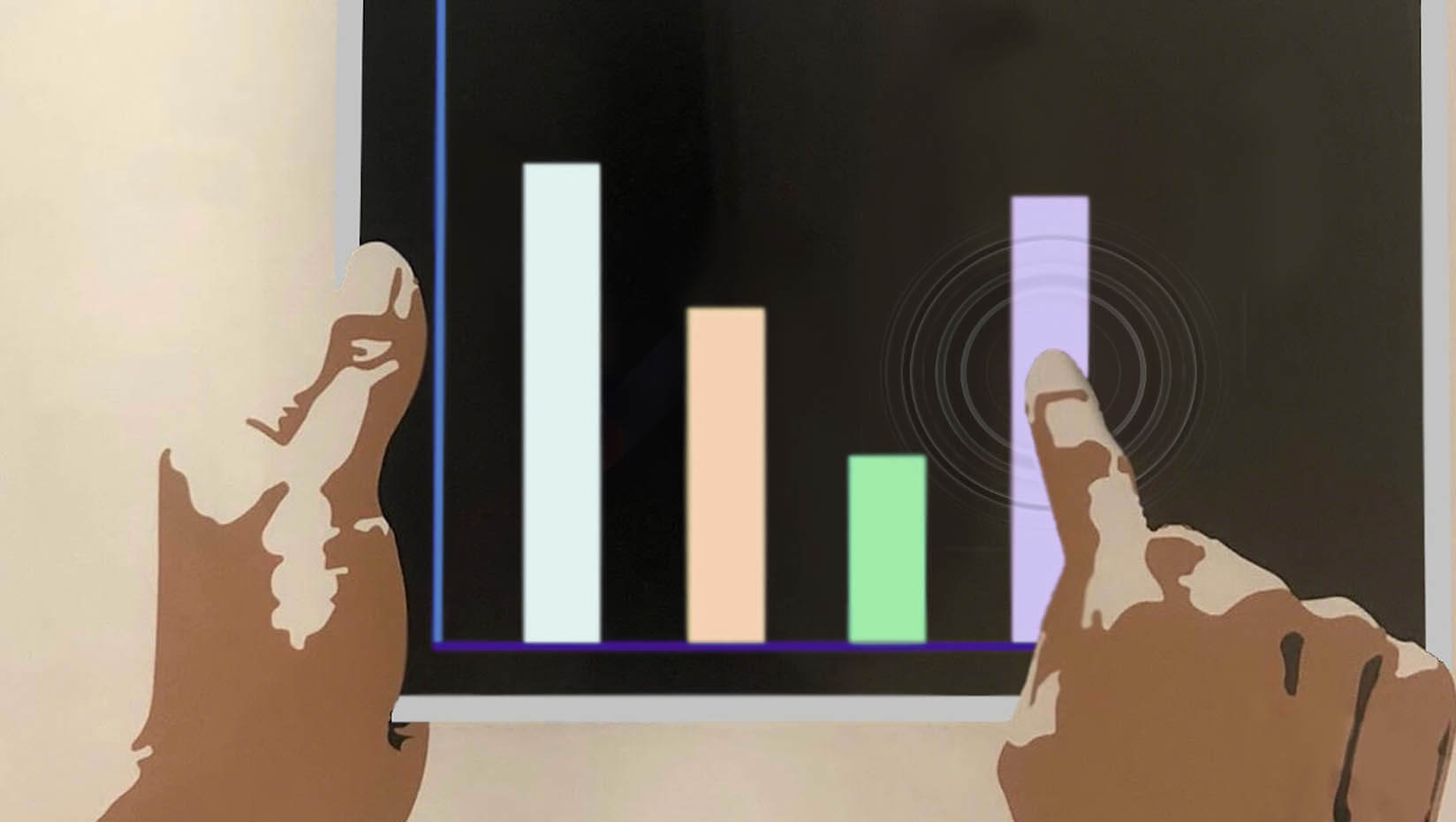
Giudice helps creation of data science teaching tools for high school students with disabilities
As the data science field continues to generate more jobs and create new research and economic development opportunities, educators have decided to teach it in high schools. Many of the materials and tools they use, however, are inaccessible and fail to meet the needs of students with disabilities, impeding their access to data science careers.
To help address barriers to entry in data science and similar sectors, Nicholas Giudice of the University of Maine Virtual Environments and Multimodal Interaction Laboratory (VEMI Lab) will help spearhead the creation of educational materials and tools that are more accessible to high school students with visual impairments, learning or other disabilities.
Giudice, a professor of spatial computing, serves as the co-principal investigator representing UMaine in the multi-institutional endeavor. Andreas Stefik, an associate professor of computer science at the University of Nevada, Las Vegas, leads the project as principal investigator, collaborating with Giudice and other co-principal investigators from Saint Louis University, the University of Alabama and the University of Washington’s DO-IT (Disabilities, Opportunities, Internetworking, and Technology) Center. The National Science Foundation awarded more than $1.3 million to the team, with $303,500 dedicated to UMaine’s participation.
“Barriers to data science curricula have contributed to a stark gap for individuals with disabilities entering the field, with only 3.8% of grad enrollments in STEM being from students with disabilities,” Giudice says. “As a solution, this project will develop new tools for making the entire data science pipeline accessible, including data entry, manipulation and output. We are using a range of approaches that integrate audio, touch and enhanced visual information to support the process. We believe the ultimate results of the project will be life changing for many currently under-served students by providing much-needed learning tools promoting greater inclusion for folks entering the increasingly data-driven workforce.”
Giudice’s research primarily explores spatial learning and navigation with and without vision and developing spatial interfaces providing multisensory information access for assistive technology designed for people with visual impairment and older adults, gerontechnology, and self-driving vehicles. He serves as chief research scientist for VEMI Lab and chief research officer at UNAR Labs, a UMaine spin-off company.
For their project to generate more resources for students with disabilities to learn data science, Giudice and VEMI Lab, along with his colleagues at other project sites, will develop teaching materials that will include a range of multisensory content, combining visual, auditory, touch-based and natural language stimuli to make statistics, graphical representations and other information accessible. They will feature accessible nomenclature and nonvisual methods for inputting and outputting data, among other capabilities.
One type of data science education resource the team plans to create involves accessible data representations based on combined auditory and haptic, or active-touch, interfaces that could be incorporated into touchscreens or other devices. The technology, Giudice says, will allow visually impaired users to feel and hear a representation of what is visually shown on a display through vibration, tones and speech descriptions.
Giudice says tools and materials he and his colleagues develop will not only comply with the Individuals with Disabilities Education Act (IDEA) and Americans with Disabilities Act (ADA), but will also be usable in general education classrooms and meet various learners’ needs.
After designing their curricula and tools for high-school level data science instruction, the researchers will validate them with empirical quantitative investigations, qualitative focus groups and an in-classroom field study. The team will recruit undergraduate students, students with disabilities, teachers and industry professionals to participate in all tests.
An advisory board consisting of experts in accessibility, data science, multi-modal graphics and curriculum will help guide the group in content development and validation.
“Students learning data science in high school today have many options, but given that none are fully accessible, the statistics for how few students with disabilities are in STEM fields are unsurprising,” Giudice says. “By resolving critical accessibility issues, this project could both inform other data science teams how to support accessibility and create a viable data science pipeline that could have impacts in how data science and statistics are taught throughout the nation.”
Contact: Marcus Wolf, 207.581.3721; marcus.wolf@maine.edu
